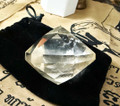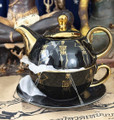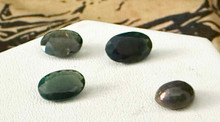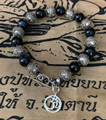 Loading... Please wait...
Loading... Please wait...- Home
- Gemstones
- Lot of Four (4) Coober Pedy Black Opal Cabochon and Gems 5.29 tcw - a Sex Magic Dream Ritual Kit and Main Healing Altar Find - The Voodoo Estate - SOLD! =
- Home
- Opals
- Lot of Four (4) Coober Pedy Black Opal Cabochon and Gems 5.29 tcw - a Sex Magic Dream Ritual Kit and Main Healing Altar Find - The Voodoo Estate - SOLD! =
- Home
- Altar Cloths
- Lot of Four (4) Coober Pedy Black Opal Cabochon and Gems 5.29 tcw - a Sex Magic Dream Ritual Kit and Main Healing Altar Find - The Voodoo Estate - SOLD! =
Lot of Four (4) Coober Pedy Black Opal Cabochon and Gems 5.29 tcw - a Sex Magic Dream Ritual Kit and Main Healing Altar Find - The Voodoo Estate - SOLD! =
Sorry but this item is currently unavailable.
Please check back at a later stage.
Product Description

SOLD!
Lot of Four (4) - Coober Pedy Black Opal Cabochon and Gems - 5.29 tcw
A Sex Magic Dream Ritual Kit and Main Healing Altar Find
~!~
This is another of our very long listings with an abundant text and 7 photographs, so please be patient and read the write-up through. If you have come this far we feel that you will find it was worth the wait.
Nearly twenty-four years have now passed since we were called to do the estate that had been closed up for seventeen years!
The Voodoo Estate
This type of call usually gets us excited as they are a treasure trove. Located here in Florida, there was no electricity or running water so we rigged our own lighting and in we went. If you have ever seen the Adams Family you will have some idea as to what we were greeted with!Then the attorney handling the liquidation gave us some background. The estate had belonged to an alleged powerful Voodoo Priestess/JooJoo Exorcist, grand daughter of a Marie Laveau, and favored daughter of a Marie Glapion. These names meant nothing to us, but the late night talk of Voodoo and exorcism in the old mansion was enough for us to spend the night in a hotel and return in the morning to assess the estate. The rest is history.
Our research has shown that this woman was what she claimed and was indeed descended from a long line of well known Vodoun family originating in New Orleans in the early 1800's.
We were pretty unnerved by this until we discovered they were also devout Catholics! Although I have to admit this was unlike any Catholic home we have ever been in and some of the items found inside were a little more than disturbing.
There was no feeling of dread or unwelcome in the mansion, however there was quite a bit of contraband and other items we can or will not sell here.
This is one of a few lots from this estate we will be listing this week, so check our other listings!
We will, upon the new guardian's request, issue a named Letter of Authenticity with each lot from this estate, complying with the terms set forth to us by the estate's attorney.
The Main Altar of Healing
Found and recovered from what was named a "Sex Magic Dream Ritual Kit" used at her, "Main Altar of Healing." This Main Altar of Healing was what amounted to a small infirmary...of sorts. Located in an east facing porched hall on the first floor it contained many unusual artifacts with alleged healing attributes. She does indeed record some dramatic, if not always successful treatments that she performed. Although, we must add, her record of successful treatment, although bizarre to many, had better than a 90% cure ratio, which, if true, is rather impressive.
Sex Magic Dream Ritual Kit
Her journals and inventory tell us this is one of eleven similar named and themed boxes she had filled with a host of selected eclectic items she deemed necessary and kept in this room for use in her healing practices.
~!~
The Lot of Four (4) - Coober Pedy Black Opal Cabochon and Gems
Among the items found inside this box (not included) we fond this lot consisting of a single black opal oval cabochon and three faceted gems used with one of the Ma Saep Nang, Phra Sant Yant, Sex Magic Dream Ritual Cloths described in further detail below.
~!~
The Opals
Her journals and inventory tell us these four stones are part of a group ground and cut for her by an unnamed Mexico City, practitioner, follower and lapidary, from opal rough obtained in 1958 from a young man who claimed to be a holy man with sacred stones to sell. "He was actually a Kupa Piti miner with raw opals to sell," she writes in one entry, and in another she tells us this bizarre story; "The Djanggawul were brother and sisters, two girls, one boy, who created Australia. They came from Beralku and made the sacrad talisman opal by breaking off pieces of their vulvas."
She goes on to write, "little did this thief know how close this was to the truth." She had these gems and cabochon cut and ground to their present form, then induced them with spells or "charged" them, as she called it. She goes on to attribute these opals in a journal entry that reads; "these are wonderful energies that awaken psychic and mystical awareness. Gaze upon them, and into them. This strengthens ones memory and has proven to be a powerful dream aid. When worn, flashes of psychic and magical insight have always been perceived. These energies will cause change to one's life so it is best to be prepared for this as opportunities for spiritual and material growth arrive quickly when exposed to them."
"Bathe the stone in the light of the full moon before wearing it in youthful regeneration."
~!~
This lot of black opals were ground, cut and polished from natural crystal opal rough that was mined in the Coober Pedy.
Coober Pedy
From Wikipedia, the free encyclopedia, for the most part...
Coober Pedy is located in South Australia. In the 2016 Census, there were 1,762 people in Coober Pedy. Of these 962 were male and 801 were female. There were 302 Aboriginal and/or Torres Strait Islander people that made up 17.1% of the population. The town is sometimes referred to as the "opal capital of the world" because of the quantity of precious opals that are mined there.
Coober Pedy is renowned for its below-ground residences, called "dugouts," which are built in this fashion due to the scorching daytime heat. The name "Coober Pedy" comes from the local Aboriginal term kupa-piti, which means "boy's waterhole."
The first opal was found in Coober Pedy on 1 February 1915; since then the town has been supplying most of the world's gem-quality opal. Coober Pedy today relies as much on tourism as the opal mining industry to provide the community with employment and sustainability. Coober Pedy has over 70 opal fields and is the largest opal mining area in the world. Aboriginal people have a long-standing connection with the area.
The first European explorer to pass near the site of Coober Pedy was Scottish-born John McDouall Stuart in 1858. The town was not established until after 1915, when opal was discovered by Wille Hutchison. Miners first moved in about 1916.
By 1999, there were more than 250,000 mine shaft entrances in the area and a law discouraged large-scale mining by allowing each prospector a 165-square-foot (15.3 m2) claim. The harsh summer desert temperatures mean that many residents prefer to live in caves bored into the hillsides ("dugouts").
A standard three-bedroom cave home with lounge, kitchen, and bathroom can be excavated out of the rock in the hillside for a similar price to building a house on the surface. However, dugouts remain at a constant temperature, while surface buildings need air conditioning, especially during the summer months, when temperatures often exceed 40 °C (104 °F). The relative humidity rarely gets over 20% on these hot days, and the skies are usually cloud-free. The average maximum temperature is 30–32 °C (86–90 °F), but it can get quite cool in the winter.
Coober Pedy is a very small town, about halfway between Adelaide and Alice Springs. It has become a popular stopover point and tourist destination, especially since 1987, when the sealing of the Stuart Highway was completed. Visitors attractions in Coober Pedy include the mines, the graveyard and the underground churches (the Serbian Orthodox Church and the Catholic Church). There are several motels offering underground accommodation, ranging from a few rooms to the entire motel being a dug-out.
The first tree ever seen in the town was welded together from scrap iron. It still sits on a hilltop overlooking the town.
~!~
This Lot of Four (4) Black Opals
This lot consists of a single 7.9375 x 6.35 x 4.7625 mm, 1.37 ct. high oval cabochon of fine grind and polish, a 9.525 x 6.35 x 4.7625 mm, 1.22 ct., a 9.525 x 6.35 x 3.175 mm, 0.81 ct., and a 11.1125 x 6.35 x 6.35 mm, 1.89 ct., faceted oval gems of fine cut and polish. All display a brilliant internal multi-color flash under single sourced light that has not been adequately captured by the photographer. The lot is 5.29 tcw.
~!~
Ma Saep Nang, Phra Sant Yant, Sex Magic Dream Ritual Cloth
~!~
We have been contacted and visited by a number of people who were interested in the items from this estate since our first batch was listed. Among the buyers have been known psychics and practitioners. More than one, after adorning themselves or handling their purchase, stated "this is a woman of power!" Many of our customers, after receiving items from this estate have reported dream contacts and other unexplained phenomenon.

Payment is due at listing end.
Check our other listings, and sign up for our newsletter as new items are usually posted daily.©Text and Photos Copyright 2001-2025 bushidobuce, all rights reserved.














